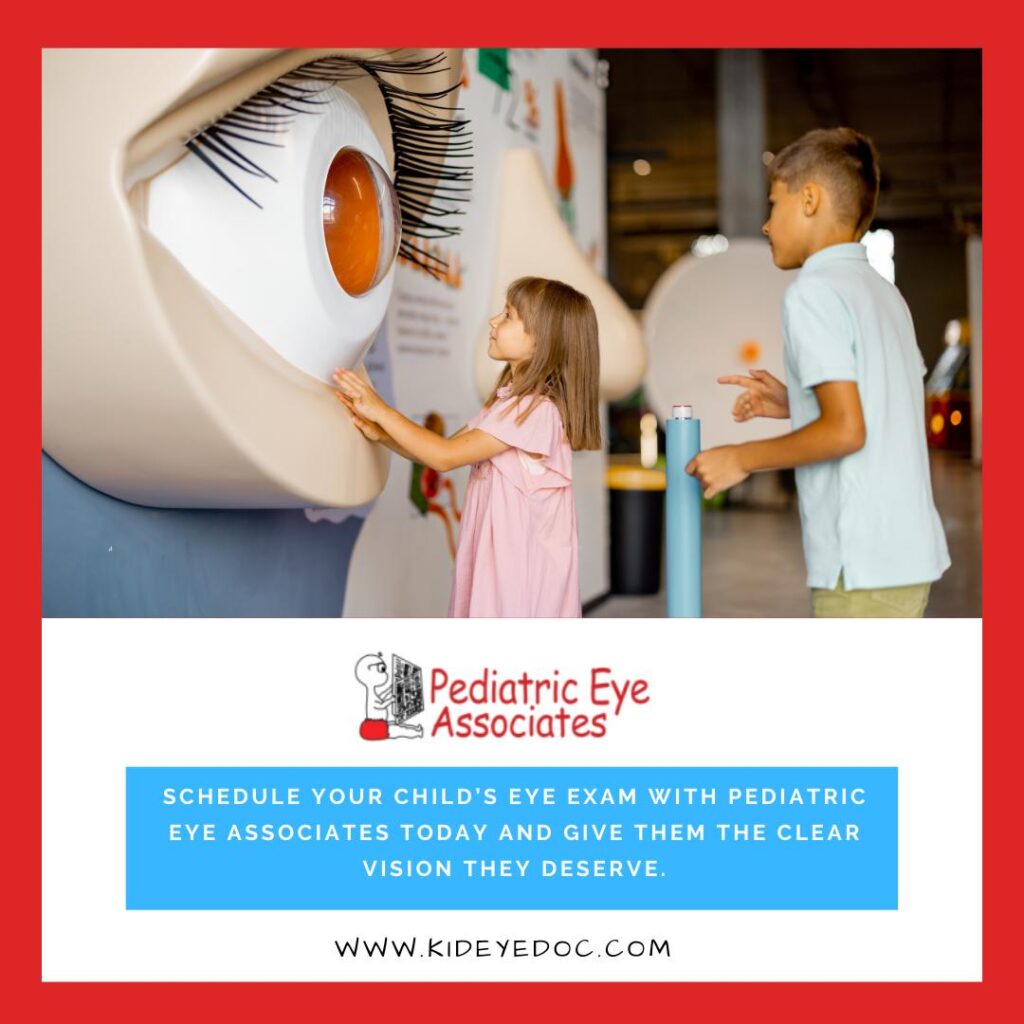Color plays a critical role in how children perceive and interact with the world around them. From learning activities and social interactions to everyday tasks like choosing clothes or reading signs, the ability to distinguish between colors is often taken for granted. Unfortunately, for some children, color vision is not always fully functional.

Color vision deficit, commonly known as color blindness, affects how a person perceives specific colors. Although it is not a life-threatening condition, it can present challenges in learning and daily life.
What is color vision deficit?
Color vision deficit is a condition in which the eyes have difficulty distinguishing between certain colors. Most people with this condition can see colors but find it challenging to determine colors between certain shades.
Color blindness is usually caused by genetic mutations that affect the light-sensitive cells (cones) in the retina, impairing their ability to detect certain colors. It can also result from eye diseases, aging, or damage to the optic nerve or retina.
The most common form of color vision deficit is red-green color blindness, followed by blue-yellow deficiencies. Complete color blindness, where an individual sees only shades of gray, is extremely rare.
What are the signs and symptoms of color blindness in children?
Children with color vision deficit may not be aware that their color perception differs from others. Therefore, it is important for parents and educators to look for potential signs, which may include:
- Difficulty learning colors or confusing colors such as red and green, or blue and purple.
- Trouble following color-coded instructions or maps.
- Complaints that crayons or markers are mislabeled.
- Frustration during classroom activities involving color.
- Preference for using patterns or shapes over color cues.
These signs often appear when children begin preschool or early elementary school, as they are more exposed to activities that involve color recognition.
How to detect color vision deficit?
Detecting color vision deficit early is essential to help children adapt and succeed academically and socially.

There are several ways to identify the condition:
1. Observation
Parents and teachers may notice inconsistencies in how a child names or uses colors. If a child consistently confuses certain colors or seems unsure when coloring or sorting items by color, it may indicate a problem.
2. Vision screenings
Some schools or pediatric offices include color vision testing in routine vision checks. If the screening identifies vision problems, then they will refer you and your child to a pediatric eye doctor for a comprehensive eye exam.
3. Specialized color vision tests
Eye care professionals use standardized tests to diagnose color vision deficit. One of the most common is the Ishihara Test, which uses plates of colored dots to form numbers or shapes that can only be seen if the viewer has normal color vision. Other tests include the Cambridge Color Test and the Farnsworth-Munsell 100 Hue Test.
Early diagnosis can help children understand their condition and develop strategies to cope with challenges related to color perception.
What is the impact of color blindness on learning and daily life?
While color vision deficit does not affect a child’s intelligence or overall eyesight, it can influence how they experience the world. Here are some areas that may be impacted:
1. Educational challenges
Many learning tools, especially in early education, rely on color coding. Children with color blindness may struggle with activities such as:
- Matching or sorting colored objects.
- Reading color-coded charts or maps.
- Completing art projects that require accurate color use.
Teachers who are unaware of a child’s color vision issues may misinterpret mistakes as inattention or misunderstanding.
2. Social interactions
Children with color blindness may feel embarrassed if they are teased for mislabeling colors or making mistakes in games or activities. This can impact self-esteem and social confidence.
3. Daily tasks
Simple everyday activities, such as picking out clothes or reading colored labels, may be more difficult. Children might rely on other cues, like shapes, positions, or textures, to navigate these tasks.
4. Future career choices
Although color vision deficit does not prevent most career paths, it may limit certain professions where accurate color perception is critical, such as a pilot, electrician, or graphic designer. Early awareness helps children explore interests and plan for suitable careers.
How to support children with color vision deficit?
Fortunately, with appropriate support and accommodations, children with color blindness can thrive. Here are some strategies that can help:
- Use labels and descriptions: Label crayons or markers with words, and describe colors in terms of lightness or darkness rather than just the color name.
- Emphasize patterns and shapes: When teaching or giving instructions, use shapes, patterns, or positions in addition to color.
- Communicate with teachers: Ensure that educators are aware of the child’s condition so they can adjust teaching materials and avoid color-dependent tasks.
- Use assistive tools: Apps and tools are available that help children identify colors or convert images into easier-to-understand formats.
- Awareness and adaptation: Teaching children about their condition helps build confidence and self-awareness. Parents, educators, and caregivers can support them by reinforcing that color blindness does not limit intelligence or ability—it simply requires a different way of seeing.
- Vision therapy: If color blindness is acquired due to a medical condition or injury, treating the underlying cause (such as cataracts or optic nerve issues) may improve color perception.
Pediatric Eye Associates: Trusted Vision Care for Your Child’s Future
At Pediatric Eye Associates, we understand how important early detection and specialized care are for children with vision challenges, including color vision deficits.

Our experienced team offers comprehensive eye exams tailored specifically for children using gentle, age-appropriate testing methods to ensure accurate diagnoses in a comfortable environment.
Schedule your child’s eye exam with Pediatric Eye Associates today and give them the clear vision they deserve. Contact the best pediatric optometrist near me now.
The material contained on this site is for informational purposes only and DOES NOT CONSTITUTE THE PROVIDING OF MEDICAL ADVICE, and is not intended to be a substitute for independent professional medical judgment, advice, diagnosis, or treatment. Always seek the advice of your physician or other qualified healthcare providers with any questions or concerns you may have regarding your health.
